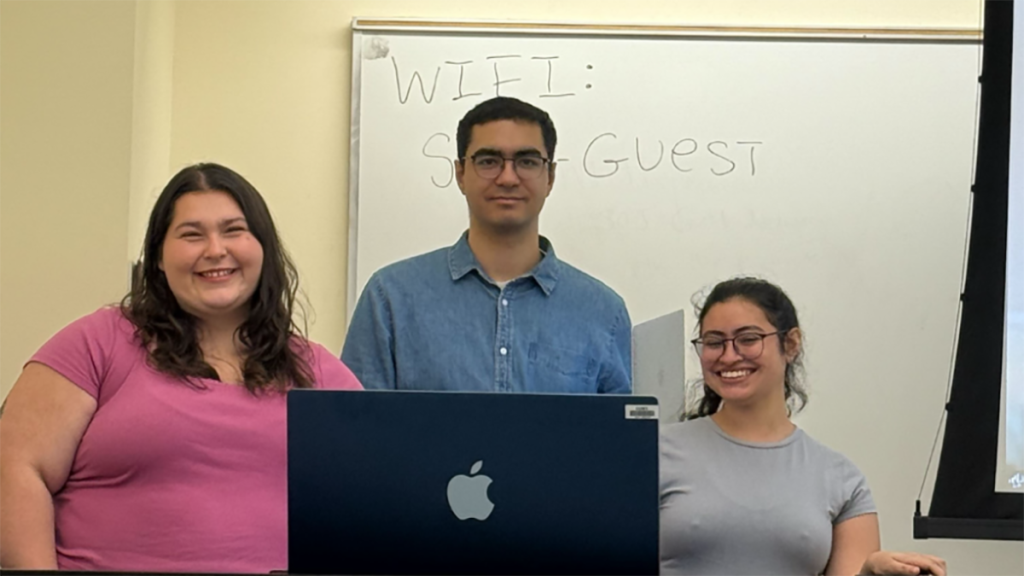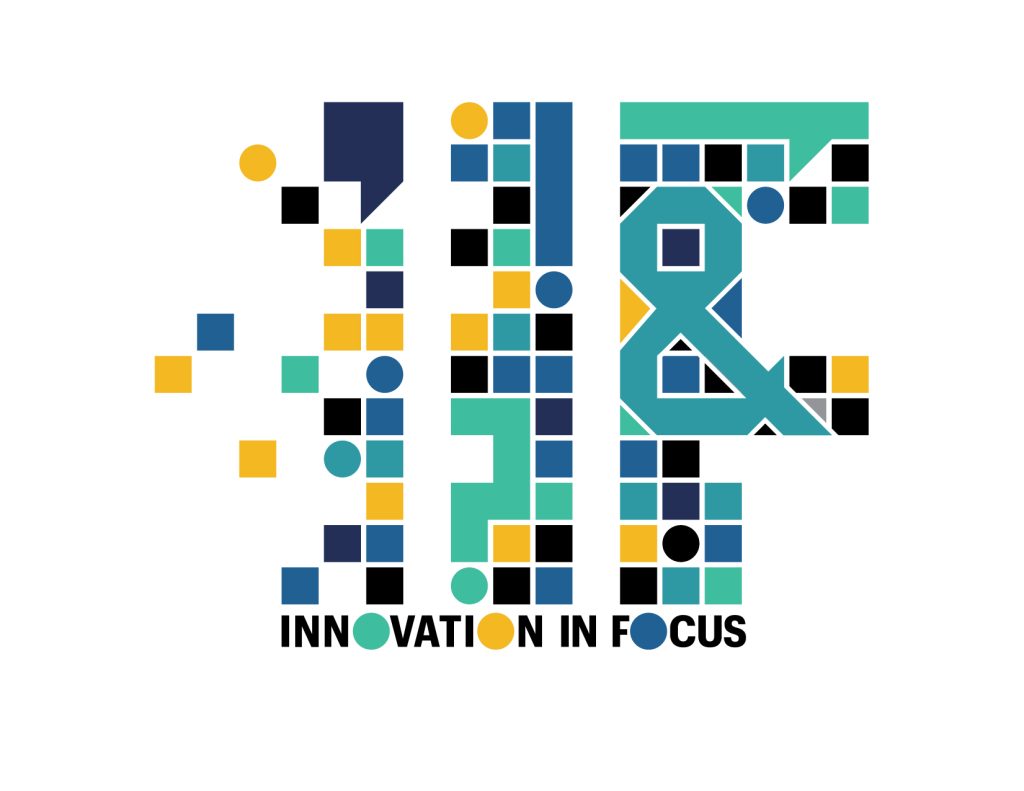
Kalyn Laire along with Epicenter NYC interns Julian Tiburcio and Amanda DeJesus present audience strategy proposals to the rest of the Epicenter NYC team. Photo: Carolina Valencia
How we built our vertical video guide
A living resource to support onboarding, consistency and experimentation at Epicenter NYC
Kalyn Laire is a 2025 RJI Student Innovation Fellow partnered with Epicenter NYC. The RJI Student Fellows will be sharing their innovative work throughout the summer in Innovation in Focus.
At Epicenter NYC, we think the best guides do more than just outline steps. They offer clarity, build confidence and provide context on how a news organization informs across formats. That’s why we built a vertical video guide: to give interns, new hires and contributors an easy-to-follow playbook to produce consistent, high-quality short-form videos across platforms that are aligned with how we cover issues outside of video.
As a small team working on local service journalism, Epicenter has incorporated generative AI and are experimenting with new AI tools and formats to meet audience needs with limited time and resources. With the goal of streamlining video production while maintaining our editorial voice and values, especially as our content scaled, we thought creating a central guide would help the team achieve this.
Driving alignment and consistency
As our short-form video production grew, so did the number of people producing it. We needed a shared resource that could:
- Onboard new team members efficiently
- Provide step-by-step workflows for editing, scripting and posting
- Ensure accessibility and editorial consistency across formats
- Create room for experimentation, testing and regular updates
We documented our process based on lessons learned and feedback from previous productions, testing new tools and referencing our editorial priorities. The result was our guide that will grow with us.
What the guide includes
The vertical video guide covers everything from pre-production to publishing, including:
- Pitching and planning: During our weekly editorial meetings, interns or other members of the editorial team focus on pitching timely, local stories that we identify using Google Trends and community conversations.
When discussing the idea with your editors, you can decide which format would be best for the video, typically by the type of information you are trying to relay, such as:- Reporter-led: This includes a few different formats and covers topics from trends and community stories that don’t have a companion written article, to event coverage, explainers, reaction videos, etc.
- AI-coproduced story (the video was developed with our team utilizing AI tools): Translates existing Epicenter articles into short videos using AI to generate scripts and suggest visuals (e.g., B-roll, graphics). Often used for coverage like housing programs, community resources, or policy updates.
- Script development: Our video scripts are either written by a team member or co-drafted with AI using ChatGPT or Rizzle, and then that writer edits the script to match our tone. We include examples of hook intros such as “Did you know…”, “Here’s what you need to know…” or “Keep watching to find out…”, context, and calls to action that have performed well historically such as asking the viewer to comment, share, sign up, click a link, or request resources, along with SEO keywords.
- Editing workflow: Team members using the guide can follow a detailed checklist on how to edit with CapCut to finalize video. This includes step-by-step how to shoot team intros and outros, sequencing Rizzle footage with human-shot content (our intros/outros), adjusting captions, and checking visual framing with Safezone. Screenshots and templates are included to make the process clear.
- Accessibility Checks: We added a dedicated section for accessibility covering alt text, caption contrast and guidance to avoid sound-only information. This is a necessary step to ensure everyone can access our information.
- Publishing Guidelines: We provide instructions on platform-specific posting, metadata structure, engagement tracking and how to engage with our audience via comments and DM.
What we learned while testing tools
Lack of capacity is a challenge for small publishers like Epicenter. The team wanted to produce more videos, however assigning staff to go out and film was not always possible. This led to Epicenter identifying other ways to increase video output, leading to Rizzle.
Rizzle uses AI and connects with a Getty library of images that enables publishers to pull visuals that are relevant to the article, generate voiceovers including using team members’ voices and produce a draft script. After rounds of testing, we found that pairing AI-coproduced content with a short filmed intro and outro featuring an Epicenter staff member significantly improved performance.
Videos with a human intro and outro saw an average 111% increase in views, 145% more likes, and higher engagement rates overall compared to videos without. While one outlier underperformed, the overall trend was clear: human presence boosts credibility and audience connection. That’s why we’ve made it a standard part of our workflow.
What made the guide work
- We documented real workflows, not theoretical ones:
Every workflow in the guide reflects how we publish videos. We included links to previous coverage and internal drives along with scripting tools and platform-specific steps when editing with CapCut framing or adding subtitles. - We centered accessibility and clarity:
The accessibility checklist became a priority after realizing many of our auto-captions had errors and alt text would be forgotten. These simple checks became part of our default workflow. - We aligned it with how our team works:
From flexible scripting options to guidance for people with no editing experience, the guide supports team members at all levels. - We plan to keep updating it:
This guide is not static. As we experiment with new formats like “video first” stories based on trends or community questions, we plan to add sections that reflect those workflows. We will continue updating the document as our tools, strategy, and audience needs evolve, which allows us to improve workflows in real time and ensure the guide reflects how we actually work. It remains useful not just for onboarding but for adapting to new platforms, formats and audience habits.
Why this matters for our team
Our goal is to make this guide a reliable starting point for every intern or freelancer who joins our team. Even if someone has never opened CapCut or written a TikTok script, they can follow the steps and create a strong first draft.
It also helps us maintain our tone, branding and accessibility standards. Whether we’re covering flood risk, housing policy or healthcare access, we want every video to be clear, engaging and useful to the communities we serve.

Sign up for the Innovation in Focus Newsletter to get our articles, tips, guides and more in your inbox each month!
Cite this article
Laire, Kalyn (2025, Aug. 26). How we built our vertical video guide. Reynolds Journalism Institute. Retrieved from: https://rjionline.org/news/how-we-built-our-vertical-video-guide/
